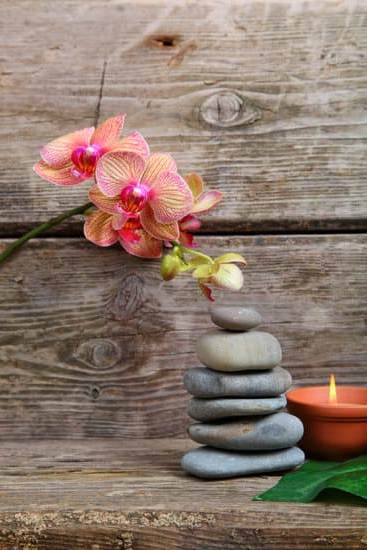Aromatherapy, the practice of using essential oils for their therapeutic properties, has gained significant popularity in recent years. One key essential oil that often takes center stage in aromatherapy discussions is frankincense. Many practitioners and enthusiasts swear by the benefits of incorporating frankincense into their aromatherapy routines. The question on many minds is, “Is frankincense good aromatherapy?”.
Frankincense has a rich history dating back centuries, where it was prized for its spiritual and medicinal properties. Originating from the resin of the Boswellia tree, frankincense has been traditionally used in various cultures for its healing effects on both body and mind. Its distinct aroma and versatile uses have made it a staple in aromatherapy practices worldwide.
When it comes to the potential health benefits of frankincense in aromatherapy, the list is extensive. From promoting relaxation and reducing stress to improving focus and uplifting mood, frankincense is believed to offer a wide range of positive effects on overall well-being.
Its anti-inflammatory and immune-boosting properties further enhance its appeal for those seeking natural remedies for various ailments. In the following sections, we will delve deeper into the history, benefits, usage methods, research findings, safety considerations, and best practices associated with incorporating frankincense into your aromatherapy regimen.
History of Frankincense
Frankincense has a rich history that dates back centuries, with its origins rooted in ancient civilizations like Egypt, Greece, and Rome. The resin obtained from the Boswellia tree was highly prized for its aromatic properties and was often used in religious ceremonies, traditional healing practices, and even as a perfume. In aromatherapy, frankincense was revered for its calming and grounding effects on the mind and body.
Traditional Uses
In traditional medicine systems like Ayurveda and Traditional Chinese Medicine (TCM), frankincense was believed to have powerful therapeutic properties. It was commonly used to support overall well-being, promote relaxation, and enhance spiritual practices. Frankincense essential oil was also utilized for its anti-inflammatory, antiseptic, and analgesic properties. From aiding respiratory issues to reducing stress and anxiety, frankincense found a place in various remedies across different cultures.
Historical Significance
Frankincense holds a special place in history as one of the precious gifts offered to baby Jesus by the Three Wise Men. This symbolic gesture highlights the value placed on this aromatic resin even in ancient times. It symbolized purification, protection, and spirituality – qualities that are still associated with frankincense today. Whether burned as incense or used in topical applications, frankincense’s historical significance contributes to its continued popularity in aromatherapy practices around the world.
Overall, frankincense has been an integral part of aromatherapy traditions throughout history due to its versatile uses and profound effects on health and well-being. From ancient rituals to modern practices, the legacy of frankincense continues to thrive as people explore its benefits for holistic healing and emotional wellness.
Benefits of Frankincense
Frankincense, derived from the resin of the Boswellia tree, has been used for centuries in aromatherapy for its numerous health benefits. One of the key advantages of using frankincense in aromatherapy is its ability to reduce stress and anxiety.
The aroma of frankincense essential oil can help calm the mind, promote relaxation, and create a sense of inner peace. Whether diffused in a room, added to a bath, or used in a massage oil, frankincense is known for its soothing properties that can enhance mental well-being.
In addition to its stress-relieving effects, frankincense is also prized for its potential immune-boosting properties. The anti-inflammatory and antimicrobial properties of frankincense essential oil may help support the body’s natural defenses against illness and infection. By inhaling the aroma of frankincense or applying it topically with a carrier oil, individuals may strengthen their immune system and improve their overall health.
Furthermore, frankincense is often used in aromatherapy for its skin-healing properties. This essential oil is believed to have regenerative effects on the skin, making it beneficial for treating scars, blemishes, and signs of aging.
When diluted properly and applied topically, frankincense can nourish the skin, promote cell renewal, and improve overall skin tone. With its versatile benefits for both physical and emotional well-being, it’s no wonder why many people consider frankincense as a valuable tool in aromatherapy practices worldwide.
How to Use Frankincense
Frankincense, known for its rich history and therapeutic properties, is a popular choice in aromatherapy practices. When it comes to utilizing frankincense for aromatherapy, there are various methods that can be employed to enjoy its benefits. Here are some detailed instructions on how you can effectively use frankincense for aromatherapy:
- Diffusion: One of the most common ways to use frankincense in aromatherapy is through diffusing the essential oil. Simply add a few drops of frankincense oil to a diffuser filled with water and let it disperse throughout the room. This method not only fills the space with a pleasant aroma but also allows you to inhale the therapeutic properties of frankincense.
- Topical Application: Another effective way to use frankincense is by applying it topically. Dilute a few drops of frankincense oil with a carrier oil like coconut or almond oil, and then gently massage it onto your skin. This method can help promote relaxation and improve skin health.
- Inhalation: For direct inhalation, you can simply add a drop of frankincense essential oil to your palms, rub them together, cup your hands over your nose, and take deep breaths. This method allows you to experience the calming effects of frankincense quickly.
Including frankincense in your daily routine through these different methods can help enhance your overall well-being and provide relief from various ailments.
Research has shown that when used properly, Frankincense is indeed good for aromatherapy due to its potential health benefits such as reducing stress and anxiety levels, promoting better sleep quality, easing inflammation, boosting immunity, and improving emotional balance. With regular use as part of your aromatherapy practice, Frankincense can serve as a valuable tool in achieving holistic wellness.
Research and Studies
When it comes to exploring the benefits of using frankincense in aromatherapy, scientific research plays a crucial role in providing evidence for its effectiveness. Several studies have been conducted to delve into the therapeutic properties of frankincense essential oil and its impact on physical and mental well-being. One study published in the Journal of Ethnopharmacology found that inhaling frankincense essential oil can potentially reduce symptoms of anxiety and depression due to its calming effects on the nervous system.
Another study published in the journal Complementary Therapies in Clinical Practice suggested that frankincense aromatherapy may help alleviate certain symptoms related to conditions like arthritis, by reducing inflammation and promoting relaxation. The anti-inflammatory properties of frankincense have also been supported by research published in the journal Phytomedicine, which demonstrated its potential in managing pain and inflammation effectively.
Moreover, research has shown that frankincense essential oil contains compounds with antimicrobial properties, making it a valuable tool in fighting off bacteria and infections. A study published in BMC Complementary Medicine and Therapies highlighted the antibacterial activity of frankincense against various pathogens, showcasing its potential as a natural remedy for respiratory infections and skin conditions. This evidence underscores the therapeutic benefits of incorporating frankincense into aromatherapy practices for overall health and wellness.
Safety Precautions
Frankincense is widely regarded as a beneficial essential oil in aromatherapy, offering a myriad of potential health benefits. However, like any other essential oil, there are some safety precautions and risks to be aware of when using frankincense for aromatherapy purposes. It is important to consider these factors to ensure a safe and enjoyable experience while reaping the full benefits of this ancient oil.
One significant precaution to keep in mind when using frankincense for aromatherapy is the potential for skin irritation. Essential oils are highly concentrated substances and can cause irritation or allergic reactions if not properly diluted. It is recommended to always dilute frankincense oil with a carrier oil before applying it to the skin. Performing a patch test on a small area of the skin before widespread use can help identify any adverse reactions.
Another important consideration is the possible interactions between frankincense essential oil and certain medications or existing health conditions. If you are pregnant, nursing, or have underlying health issues, it is advisable to consult with a healthcare professional before incorporating frankincense into your aromatherapy routine. Certain medications may also interact with essential oils, so it is crucial to seek guidance if you are taking any prescription drugs.
In addition to skin sensitivity and medication interactions, it is essential to store frankincense oil properly. Essential oils should be kept in dark glass bottles away from direct sunlight and heat sources to prevent degradation. Proper storage will help maintain the potency and efficacy of the oil for longer periods. By following these safety precautions and guidelines, you can enjoy the benefits of frankincense in aromatherapy safely and effectively.
| Considerations | Recommendations |
|---|---|
| Skin Irritation | Dilute with carrier oil and perform patch test |
| Medication Interactions | Consult healthcare professional before use |
| Proper Storage | Store in dark glass bottles away from sunlight |
Best Practices
Frankincense has been a popular choice in aromatherapy for centuries due to its unique aroma and potential health benefits. When it comes to maximizing the effectiveness of frankincense in aromatherapy, there are several key best practices to consider. One essential tip is to ensure you are using high-quality, pure frankincense essential oil for the best results. Look for reputable brands that offer organic and sustainably sourced products to guarantee authenticity.
Incorporating frankincense into your daily routine can also enhance its benefits. Whether through diffusing the oil, adding it to a bath, or creating a personal inhaler, consistent use can help maintain a sense of well-being and relaxation. Creating a tranquil environment with soft lighting, calming music, and comfortable seating can further enhance the effects of frankincense aromatherapy.
Additionally, combining frankincense with other complementary essential oils like lavender or peppermint can create synergistic blends that target specific concerns such as stress relief or improved focus. Experimenting with different combinations and concentrations can help you discover what works best for your individual needs. Remember that consistency is key when using frankincense for aromatherapy purposes; incorporating it into your daily self-care routine can lead to long-lasting benefits for both your physical and emotional well-being.
| Benefits of Using Frankincense in Aromatherapy | Effective Tips for Maximizing Frankincense Aromatherapy |
|---|---|
| Supports relaxation and stress relief | Use high-quality, pure frankincense essential oil |
| Boosts mood and emotional well-being | Incorporate frankincense into daily routines |
| Enhances focus and mental clarity | Experiment with different essential oil blends |
Conclusion
In conclusion, frankincense has proven to be a valuable and effective tool in the practice of aromatherapy. Its long history as a revered substance with traditional uses for spiritual and medicinal purposes adds to its allure. The numerous health benefits associated with using frankincense in aromatherapy, such as reducing inflammation, boosting immunity, and promoting relaxation, make it a popular choice among enthusiasts and practitioners alike.
Furthermore, research and studies have provided scientific evidence to support the therapeutic properties of frankincense in aromatherapy. These studies have shown promising results in terms of its effectiveness in treating various health conditions and promoting overall well-being. When used properly and with the necessary safety precautions in mind, frankincense can truly enhance the experience of aromatherapy.
Frequently Asked Questions
Is It OK to Inhale Frankincense?
Inhaling frankincense can be safe in moderation, but it’s always best to dilute it properly to avoid any potential irritation. Some people find the aroma soothing and use it for relaxation purposes.
Is It Safe to Diffuse Frankincense Oil?
Diffusing frankincense oil is generally considered safe as long as it’s done in a well-ventilated area and following the manufacturer’s instructions. The calming and grounding properties of frankincense make it a popular choice for aromatherapy.
Does Frankincense Have a Calming Effect?
Frankincense is known for its calming effect on the mind and body. It has been used for centuries in meditation practices to promote a sense of peace and relaxation. Many people find that inhaling frankincense helps reduce stress and anxiety levels.

Are you looking for a natural way to improve your health and wellbeing?
If so, aromatherapy may be the answer for you.





